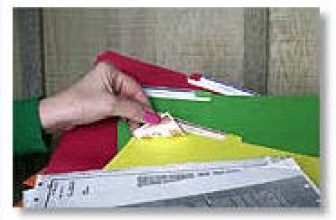
U.S. National Guard uses RFID system to effectively track office assets
[ad_1]
The US National Guard now uses an RFID system to track office assets in the 12-story headquarters building in Washington. The National Guard installed the system in early February this year and is currently labeling 10,000 assets.
A total of 4560 people from 57 departments of the United States National Guard work in this building. The adoption of this system allows the agency to track the location of desktops, notebooks, projectors and other electronic devices at any time. Every employee in the organization is equipped with 8 devices including computers. When employees are transferred to other offices of the National Guard, they must return their electronic assets, and the equipment will be redistributed.
Tracking such a large number of assets-especially considering that they often move in and out of the building-is a difficult task. In addition to keeping records of the assets owned by each person (with serial numbers on the assets), the organization must also count the assets once a year, that is, send specialized personnel to check the assets in each office and record the serial numbers of the assets. Such a process often takes several weeks, said James Roots, First Warrant Officer of the National Guard.
In order to automate the inventory, the organization finally decided to adopt the Profitable Inventory Control Systems (PICS) asset tracking system. According to Joe Milam, PICS sales director, the guard uses Intermec PM4i RFID printers to print labels. Employees enter the serial number, description, location (such as the ID number of the office) and assigned personnel of an item into the computer. Then encode a unique ID number to the EPC Gen 2 915 MHz RFID chip in the tag, and the ID number corresponds to the serial number. The size of the label is 4 inches * 0.857 inches and is designed by the label packager Inspec Tech.
When the building’s IT department counts electronic assets (which is now performed every three months), Roots said that employees will use Intermec 700 series handsets and Intermec IP4 RFID reader modules. The handheld will be placed on a cradle, and the notebook and the cradle will be connected by wires to download the latest identification data of the device, the name and department of the employee.
When employees pass through various offices with the reader in hand, the reader can obtain the ID number of the device tag as far as 5 feet away. PICS asset tracking software translates the data read by RFID. If a missing or incorrectly placed device is found, the reader will display an alarm message. Once the employee has finished reading the assets, he puts the reader back on the cradle and uploads the reader data to the notebook.
According to Roots, the installation of this system will be divided into two stages, and it is currently in the first stage. The second phase will be launched in August this year, when RFID door readers will be installed at the entrance and exit of the building and in the parking lot.
Whenever the reader reads the device tag, it will send the data to the PICS back-end system. This action will trigger an alarm and automatically record the time and location of the event. Managers can then view the surveillance images during this period to determine whether the device has been moved without authorization.
The first phase of the system installation will cost 94,000 US dollars, including hardware, software costs and installation costs, and the second phase is estimated to cost 80,000-90,000 US dollars.
[ad_2]




